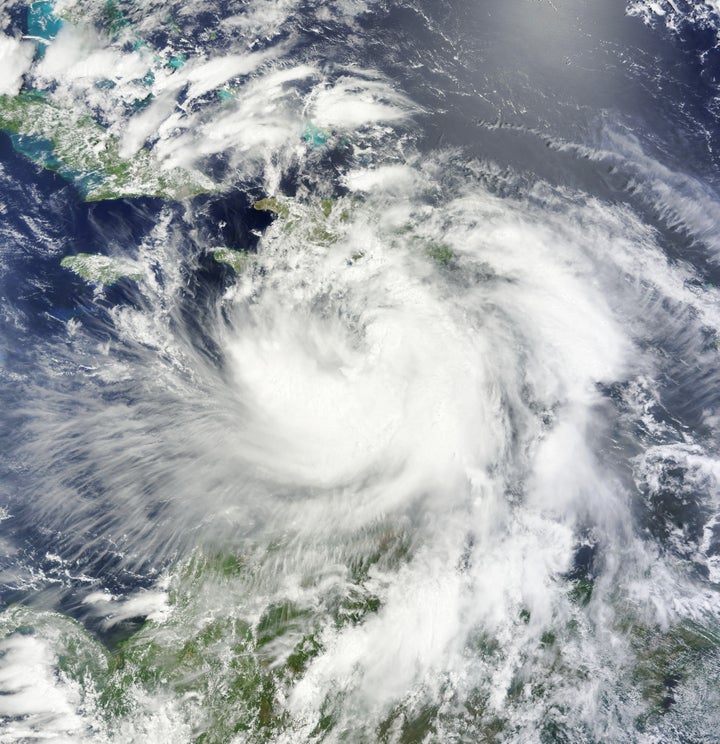
As Tropical Storm Isaac continues to pound the Mississippi and Louisiana coasts with up to 20 inches of rain, massive flooding, and treacherous storm surges, more than 42 percent of the country is ravaged by drought. One of the worst-hit states is Texas, according to the National Climatic Data Center.
But what if the excess water from hurricanes like Isaac could be collected and dispersed to areas suffering from water shortages? It goes without saying, but I am saying it here anyway, that in an election year, this question should be put on the table. Whether or not you believe in global warming, patterns in climate changes point towards warmer winters, hotter summers, and a potential for dangerous water shortages down the road. It is time to look around the corner so that we can think ahead of the curve.
As I woke up today and looked at The Weather Channel footage of Hurricane Isaac, it struck me as the perfect time to pop the question, so to speak. On Aug. 13, I wrote about how the news god loves August. And while hurricanes in August are not unexpected, using a natural disaster as a springboard to brainstorming a solution to another natural catastrophe, well, I can't help thinking the news god would smile.
This is not my idea. Last week, I received a phone call from Jack Smith, until recently an executive producer at NatGeo and previously the Discovery Channel, where he produced Superstorm and Supervolcano. Jack and I worked in the same CBS newsroom from the late 1970s through the mid-1980s and have periodically exchanged emails and catch-up phone calls over the years. His voicemail message was terse: "Need your help. Call me."
Jack had been ruminating about this for quite some time. "You see how we waste all this water from melt-offs and flash floods? What if we built underground dams, about a mile wide, a mile deep and a mile underground? The water from the flooded area would be siphoned into tunnels that would connect to the underground reservoirs, where it would be processed into usable water for farms, human, and livestock consumption," he said. "This would save water and prevent the towns from being flooded again."
But his plan goes further than that. The big picture would be to use ancient technology -- an underground version of the Roman aqueduct system -- to move the captured water to drought-stricken land. The Romans used a slight incline design that used gravity to move water throughout the Roman Empire. At the same time, it would put people to work. "This could be as big as President Eisenhower's transcontinental highway system, only underground. It could employ one million people, including service, supply, support and construction personnel," he said. "It's shovel-ready."
It goes without saying -- but I am going to say it anyway -- this water reclamation program would be expensive. And that's what I told Jack who was ready with this one: "Is it as expensive as the water wars will be if we don't solve this problem?" He continued, "There was another place with rainforests, rivers, and lakes. It was paradise. Now it's called the Sahara desert."
Before you click to the next story, let's look at some numbers. The Edmund G. Brown California Aqueduct system which contains 683 miles of aqueducts, 25 dams and reservoirs, and eight hydro-electric pumping stations, cost around $6 billion when it was built in the 1970s. Even allowing for today's inflation, that's chump change compared to the 1,367,800-and-counting dollars the U.S. Government has spent on wars in Iraq and Afghanistan since 2001, according to the National Priorities Project, an independent research organization that keeps a running tab at CostOfWar.com.
One way to start would be with a pilot project that would help both Louisiana and Texas by capturing excess water from hurricanes and transporting it where it is most needed, where the earth is parched and cracking. Implementing the vision for a national program would probably take us into the 22nd century. But since extreme weather patterns are predicted to worsen, wouldn't it make sense to start addressing this now, during an election year?
In the short-term, might it be possible to experiment next year with emergency cisterns to capture excess water that could be shipped in railroad tanker cars to where it is most needed? Could Congress allocate funds for the Water Reclamation Bureau to have a small pilot program ready for the 2013 hurricane season?
Sure, it looks expensive. But isn't it cheaper than going to war? As Jack said, "It's cheaper than going to war over water. It's cheaper than losing our farms. And it's a hell of a lot cheaper than sitting around hoping everything will turn out all right."
